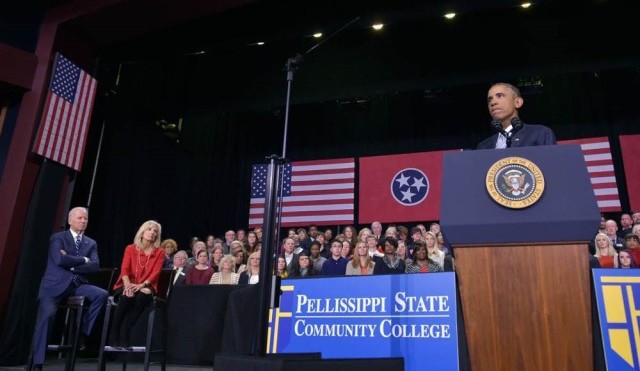“College students are not customers. That analogy needs to die. It needs to be drowned in the world’s largest bathtub. It needs a George R.R. Martin–esque bloodbath of a demise.”
These are the strong words of education writer Rebecca Schuman in response to Iowa’s recent attempt to pass a law tying professors’ job security to their teaching evaluations. Such laws, Schuman and others think, are based on the misguided idea that students are akin to customers.
OK, So College Isn’t Like a Restaurant
To an extent, we agree with Schuman, but we think she vastly oversimplifies. In one way, it is hard to deny that students are customers. They (or someone acting on their behalf) pay for a service and, like customers in any other market, students can take their tuition money elsewhere if they aren’t satisfied.
Whether the educational experience was to the student’s “liking” may not be a good measure of the quality of the university’s educational services.
On the other hand, as Schuman points out, college education looks quite different from many other businesses. Unlike restaurant patrons, for example, students are buying a service (education) that isn’t geared toward customer enjoyment. A good college education may even push students in ways they don’t enjoy.
Whether the tilapia was prepared to the patron’s liking is a good measure of the restaurant’s food. Whether the educational experience was to the student’s “liking” may not be a good measure of the quality of the university’s educational services.
Rather than this distinction being evidence for Schuman’s claim, however, it actually points out one of its flaws. She overlooks the fact that not all customers have the same sort of relationship with a business as we see in the restaurant industry, which serves as the only basis of her customer analogy.
Yes, colleges certainly have a different relationship with students than restaurants have with patrons. Patrons are there to get what tastes good and satisfies them for that specific visit. Students are (presumably) there to receive a good education, which may not instantly please them and may sometimes have to “taste bad” to be effective. (Most people who go to the dentist don’t find it immediately pleasurable, either, but, in the long run, they are certainly glad they went.)
No Pain, No Gain
We can think of three alternative business analogies for the university-student relationship.
First is personal training or physical therapy. Like university education, they involve services that aren’t geared toward immediate consumer happiness. To help a client achieve good results, a trainer often has to make the workout difficult when the client might have wanted to go easier. And good physical therapy often involves putting the client through painful motions the client would rather not undergo.
Yet, these businesses see their clients as customers and probably take customer feedback quite seriously. Trainers need to push customers past where they want to go, but this doesn’t mean trainers dismiss negative feedback.
Credible Credentials
Second are certification services, firms that provide quality assurance for other firms. Such providers may find themselves at odds with their customers when they withhold certification, but if the firm asking for certification really wants an assurance of quality for its customers, that firm will understand why its unhappiness at being denied isn’t a reason for the certifying organization to just cave to whatever its customers want.
Schuman suggests that if students are customers, the university must be a profit-grubbing business.
For example, a manufacturer of commercial refrigerators might seek certification from Underwriters Laboratories to prove to restaurant owners that its appliances have been independently tested and proven to hold food at safe temperatures that won’t sicken customers. If tests reveal that the fridges aren’t getting cooler than 50 degrees — far above food safety guidelines — the fridges won’t get certified.
Any certifying bodies that give in to pressure to certify all paying customers will end up being punished by the market when someone (a competitor? a journalist?) reveals that the company’s certification doesn’t really certify anything. Protecting the quality of the certification process is in everyone’s interest, even if it makes some of a certifier’s customers unhappy with particular outcomes.
College students may well be like the firms seeking a certification of quality, with employers and graduate schools being the analogue of their customers, who will only hire or admit “certified” students.
The Cheapest Product at the Highest Price?
A third analogy is the nonprofit organization. Schuman suggests that if students are customers, the university must be a profit-grubbing business, and since a “business’s only goal is to succeed,” a customer-focused university will “purvey… the cheapest product it can at the highest price customers will pay.”
But does viewing the people one serves as customers necessarily turn one into a business whose concern is to sell poor products at a high price rather than to provide a good service? Credit unions, art museums, area transportation services, and, yes, private K–12 schools are often organizations that don’t operate for profit and yet provide services directly to paying customers.
Nonprofit museums charge admissions and nonprofit ride services charge for rides; therefore, they serve paying customers. But this does not mean they aim to make the maximum profit possible, or in fact any sort of profit, by providing the lowest quality at the highest price. (Of course, we would take issue with Schuman’s characterization of even more traditional profit-seeking firms as aiming to sell junk at high prices, but we can leave that to the side for our purposes here.)
Schuman is wrong to think that if universities see students as customers, this must turn them into profit-driven businesses in this narrow sense.
Is the Customer Always Right?
For all that, we sympathize with some of the basics of Schuman’s argument. As college professors, we understand her concern over putting too much stock in student evaluations of teacher performance. Even if students are customers, they surely aren’t customers in the same way the restaurant patron is a customer. And a restaurant will not automatically treat every customer comment card as equally influential in changing how it does business. Some restaurant customers have unrealistic expectations or don’t understand the food service business, and restaurants often have to decipher what feedback to take seriously and what to disregard.
We suspect that Schuman’s confusion may result from universities and professors thinking that they are selling something different from what students may think they are buying. Students generally want the degrees that come from education, with education being the process to get the degree. Universities (and professors) sell knowledge and skills, and the degree is simply the acknowledgement that students have obtained that knowledge.
Professors may think that they are selling something different from what students think they are buying.
Good learning may be difficult and, in the short run, unpleasant. But for students aiming for a degree, it would be better to go through classes that are agreeable and aren’t too difficult. If this is right, you can see why there’d be a mismatch between how students think their education is going and how it may actually be going, and why the former may not be the best gauge of the latter.
With a restaurant, the customer and the seller both agree on what the product is: a good meal (and good restaurateurs will generally defer to what the customer wants). With personal training, it may be that the trainer’s job involves pushing customers past where they’d go on their own, but the trainer and customer do still generally agree on the service: the trainer helps customers achieve their goal of fitness.
We appreciate and share Schuman’s concern that universities not over-rely on student evaluations and the degree to which students find their educations pleasurable in a narrow sense. But the issue isn’t as simple as saying that, because professors’ job security shouldn’t come down entirely to student evaluations, students aren’t customers.
Yes, there is a danger in treating students the way restaurateurs treat patrons. But there is also danger in the other extreme: if we stop viewing students as customers in some sense of the term, then instead of treating them with the respect we generally see in the personal training and certification industries and among nonprofits, we risk turning universities into something more like the DMV.
 Kevin Currie-Knight
Kevin Currie-Knight
Kevin Currie-Knight teaches in East Carolina University’s Department of Special Education, Foundations, and Research. His website is KevinCK.net. He is a member of the FEE Faculty Network.
 Steven Horwitz
Steven Horwitz
Steven Horwitz is the Charles A. Dana Professor of Economics at St. Lawrence University and the author of Hayek’s Modern Family: Classical Liberalism and the Evolution of Social Institutions.
He is a member of the FEE Faculty Network.
RELATED ARTICLE: This State Offered Free College Education. Here’s What Happened.









 And so on…
And so on…



 I haven’t written about
I haven’t written about 



 Ah, yes, our old friend, the
Ah, yes, our old friend, the 






